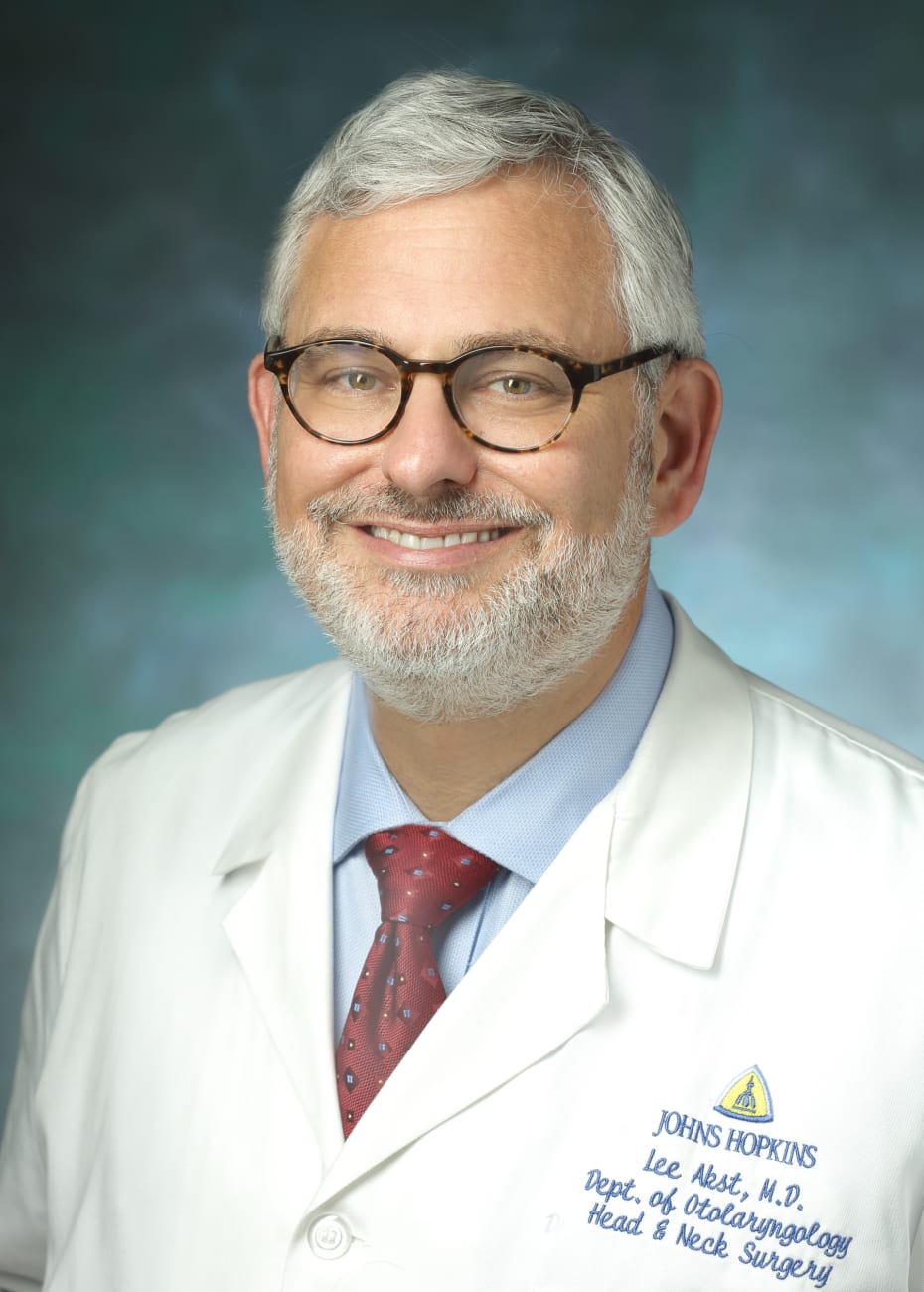
Johns Hopkins experts offer innovative surgical techniques that may lessen the damaging impact on the voices of patients with laryngeal cancer.
Over the past two decades, oncology has undergone a sea change in how the field assesses a positive outcome, say Johns Hopkins otolaryngologists–head and neck surgeons Lee Akst and Wayne Koch. Rather than removing an entire structure affected by a tumor — a frequent occurrence in the past — innovative techniques often allow doctors to preserve more anatomy while still maintaining low recurrence rates and long-term cures.
But while saving existing structures is important, Akst and Koch say, preserving function is the real goal, especially for the larynx, an organ pivotal for breathing, swallowing, and communicating by voice.
For early stage glottic cancers, Akst explains, offering surgical resection rather than radiation could be the difference between preserving and losing laryngeal function. While radiation could potentially scar areas beyond the tumor site, surgery largely affects only the area originally inhabited by the tumor, preventing vocal cord stiffening that could significantly affect a patient’s voice. Surgery has other advantages too, he adds: While patients who have had surgery are often candidates for future surgeries or radiation if their cancer recurs, those who were initially treated with radiation typically aren’t, significantly limiting subsequent treatment options. Surgery also often tends to be less expensive for patients and the health care system as a whole.
“There is certainly a subset of patients for whom surgery provides better voice outcomes than radiation and it’s important to get evaluated in centers such as ours that offer surgery as an option, are familiar with the latest advances in surgical techniques, and can appropriately counsel patients on their best options,” Akst says.
Akst often resects early stage laryngeal tumors using transoral laser microlaryngeal surgery, which leaves no visible scarring and uses a laser as a precision tool to remove just the tumor and appropriate margin, sparing normal tissue.
Koch typically treats patients with more advanced laryngeal cancers, which require more extensive resections. By nature of their size, these tumors can’t be removed transorally and necessitate a more invasive approach.
If possible, Koch says, he will perform a partial laryngectomy rather than a total one, often approaching the tumor through the neck. Depending on the tumor’s location, patients may receive a vertical hemilaryngectomy, in which one side of the larynx is removed, or a horizontal hemilaryngectomy, in which the top or bottom half is removed. Advanced laryngeal cancer patients are usually also treated with chemotherapy and radiation, or solely with these therapies if surgery isn’t appropriate, Koch adds.
Regardless of tumor stage and treatment, Akst says, some degree of vocal change occurs with any of these treatments. Removing early stage cancers might improve patients’ voices, even with the resulting scar tissue, since tumors themselves can negatively impact voice. But removing part or all of the larynx has unique vocal challenges that need to be addressed with the help of speech language pathologists, who partner with Akst and Koch in patient care.
To decide on treatment plans for each patient, Akst and Koch, along with other surgical oncologists, medical and radiation oncologists, speech language pathologists, nurses, and other members of the care team meet weekly for a multidisciplinary head and neck tumor board, where they share their expertise. Having these experts available at the same institution, working together toward a common precision medicine goal, achieves the best functional outcomes possible for laryngeal cancer patients, Akst says.
“We tell patients that they have a great team working as a unit to care for them,” he adds. “It’s a journey, and we’re all on it together.”
To refer a patient, call 443-997-6467.




